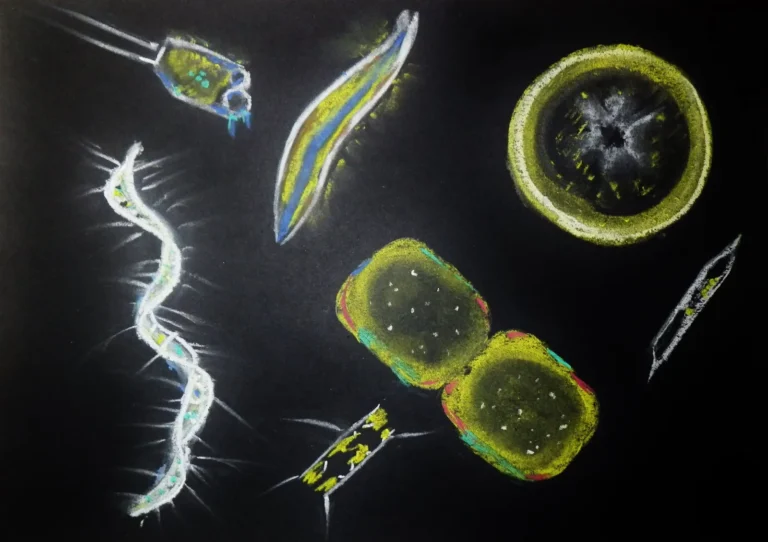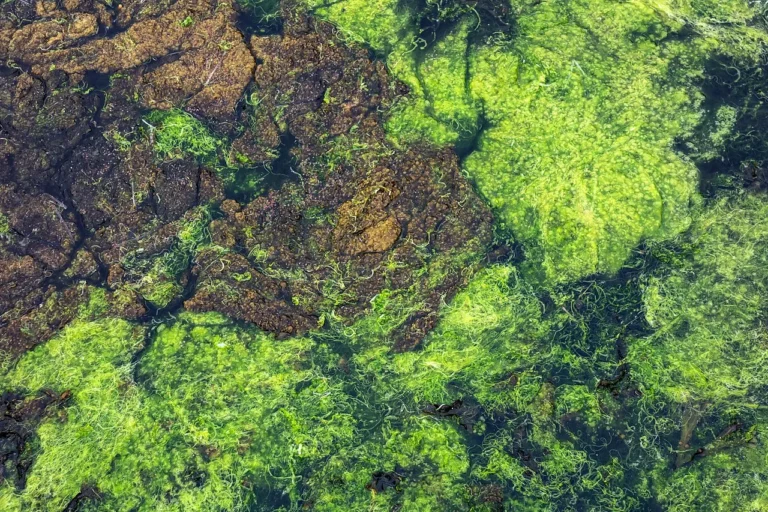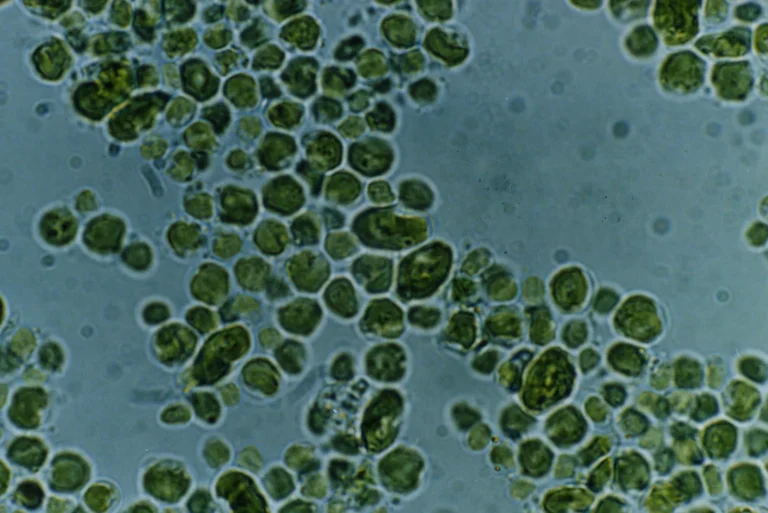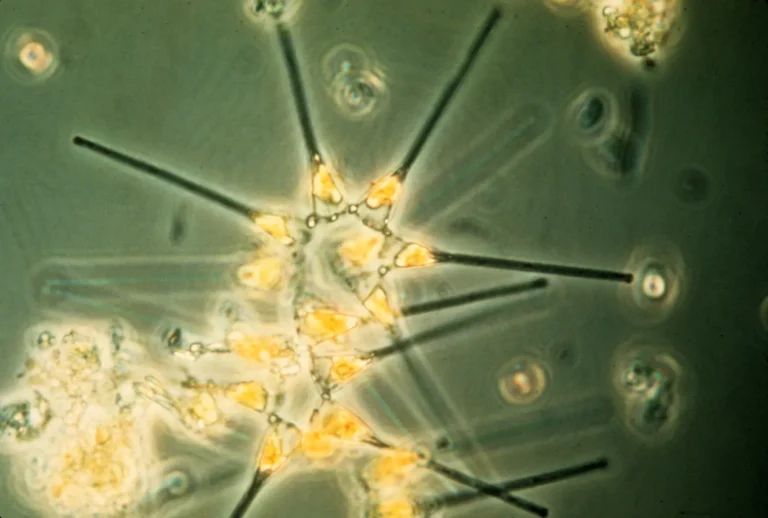Is Grass a Producer? Trophic Position of Grasses Explored
Grass is indeed a producer, which gains energy and biomass from sunlight and inorganic reagents (carbon dioxide, water) through photosynthesis.
This article discusses the status and role of grass as a producer in the ecosystem or food chain.
Is Grass a Primary Producer?
Yes, grass is a primary producer because it possesses chlorophyll pigment for photosynthesis, takes-in carbon dioxide and releases oxygen during respiration, and also possesses typical plant features like leaves and roots.
Reasons Why Grass is a Primary Producer
1. Possession of Chlorophyll Pigment for Photosynthesis
Grass is a primary producer due to its possession of chlorophyll pigment for photosynthesis. Chlorophyll is a green pigment found in the chloroplasts of plant cells, including grass.
It plays an important role in capturing sunlight and converting it into chemical energy through the process of photosynthesis.
During photosynthesis, grass absorbs sunlight energy and uses it to convert carbon dioxide and water into glucose (a type of sugar) and oxygen. This process takes place in the chloroplasts, where chlorophyll molecules are located. The energy from sunlight is used to split water molecules, releasing oxygen as a byproduct and utilizing hydrogen to combine with carbon dioxide to form glucose.
The presence of chlorophyll in grass allows it to harness the energy of the sun and convert it into a usable form of energy for itself. This ability to produce its own food through photosynthesis is a characteristic of autotrophs, or organisms that can synthesize organic compounds from inorganic substances.
By producing glucose through photosynthesis, grass serves as a primary source of energy for other organisms in the ecosystem. Grazing animals, such as cows and horses, consume grass as a food source, obtaining the energy stored in the glucose molecules. This energy is then transferred through the food chain to higher-level consumers.
In addition to chlorophyll, grass possesses other typical plant features like leaves and roots. Leaves are the primary site of photosynthesis, while roots anchor the grass in the ground and absorb water and nutrients from the soil. These features further support the classification of grass as a primary producer.
Therefore, the possession of chlorophyll pigment for photosynthesis is a key reason why grass is considered a primary producer. Through photosynthesis, grass is able to convert sunlight, carbon dioxide, and water into glucose and oxygen, providing energy for itself and serving as a fundamental food source for other organisms in the ecosystem.
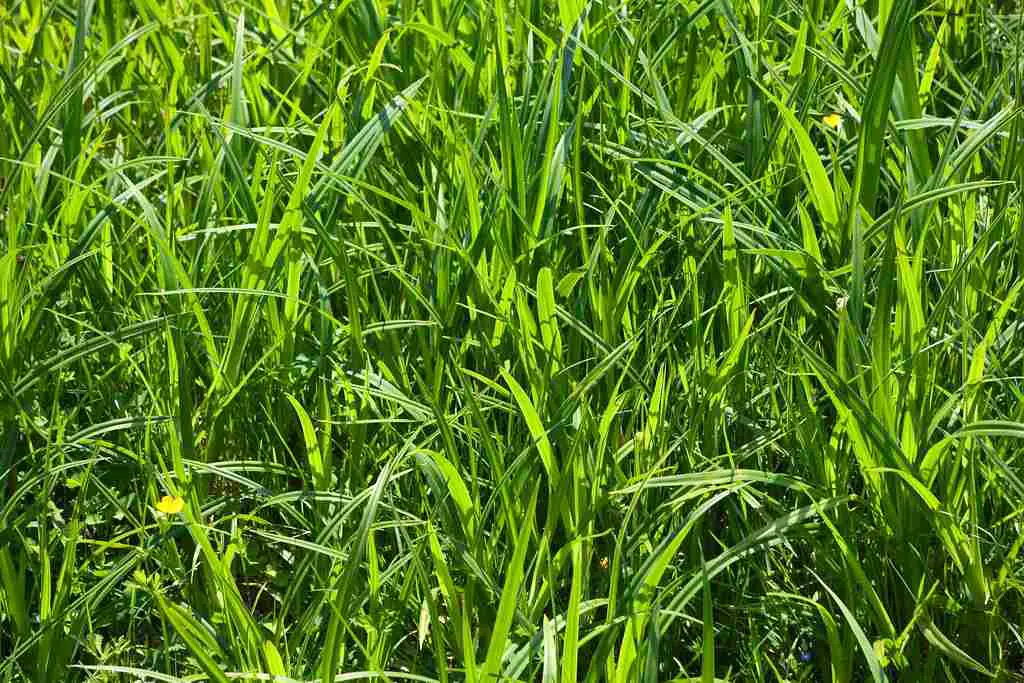
2. Intake of Carbon Dioxide with Release of Oxygen
Grass is a producer due to its ability to intake carbon dioxide and release oxygen. During photosynthesis, grass absorbs carbon dioxide from the atmosphere through tiny openings called stomata on the surface of its leaves. This carbon dioxide is then used in the process of converting sunlight energy into glucose, a form of sugar that serves as a source of energy for the grass itself.
As grass takes in carbon dioxide, it simultaneously releases oxygen back into the atmosphere. Oxygen is a byproduct of photosynthesis and is released through the stomata. This process is crucial for maintaining the balance of gases in the atmosphere and providing oxygen for other organisms to breathe.
The intake of carbon dioxide and release of oxygen by grass is not only beneficial for the grass itself but also for the entire ecosystem. Oxygen is essential for the survival of many organisms, including humans and animals. It is used in cellular respiration, the process by which organisms convert glucose and oxygen into energy, carbon dioxide, and water.
Furthermore, the release of oxygen by grass contributes to the overall oxygen levels in the atmosphere. This oxygen is then available for other plants and organisms to utilize. In this way, grass plays a vital role in maintaining the oxygen cycle and supporting the life of other organisms.
The ability of grass to intake carbon dioxide and release oxygen is a characteristic of producers, which are organisms that can produce their own food through photosynthesis. By converting carbon dioxide into glucose and releasing oxygen, grass serves as a primary source of energy and oxygen for other organisms in the ecosystem.
Drawing from the above, it can be said that the intake of carbon dioxide and release of oxygen by grass is a key reason why it is considered a producer. Through photosynthesis, grass not only produces its own food but also contributes to the oxygen levels in the atmosphere.
3. Possession of Typical Plant Features like Leaves and Roots
Another reason why grass is considered a producer is its possession of typical plant features like leaves and roots. These features are essential for the process of photosynthesis and nutrient absorption, which are key characteristics of producers.
Leaves play important role in the production of food for grass. They are the primary site of photosynthesis, where sunlight energy is converted into chemical energy in the form of glucose. The broad and flat shape of grass leaves maximizes the surface area available for capturing sunlight. This allows grass to efficiently harness energy from the sun and convert it into usable food.
In addition to leaves, grass also possesses roots, which are responsible for absorbing water and nutrients from the soil. The root system of grass is extensive and well-developed, allowing it to access water and essential minerals from deep within the ground. These nutrients are vital for the growth and survival of grass, enabling it to produce its own food through photosynthesis.
The combination of leaves and roots in grass demonstrates its adaptation to the terrestrial environment. Leaves enable grass to capture sunlight, while roots ensure its access to water and nutrients. This ability to obtain resources from both the air and the soil is a characteristic of producers, as they are self-sufficient in meeting their energy and nutrient needs.
Furthermore, the possession of typical plant features like leaves and roots also allows grass to interact with its environment in other ways. Leaves, for example, can help regulate temperature through transpiration, the process by which water evaporates from the surface of leaves. Roots, on the other hand, contribute to soil stability and prevent erosion by anchoring the grass in place.
Is Grass a Producer or Consumer?
Grass is a producer, and not a consumer, because it does not feed on other organisms, has none of the consumer characteristics like teeth and complex digestive system, and it is found at the base level (that is; level 1) of the food chain.
These characteristics are all in contrast to those of typical consumers.
Reasons Why Grass is Not a Consumer
1. Grasses Do Not Feed on Other Organisms
Grasses do not feed on other organisms, which is a key reason why they are not considered consumers in the ecological sense.
Unlike animals that rely on consuming other organisms for energy and nutrients, grasses obtain their energy through photosynthesis. This process allows them to convert sunlight, water, and carbon dioxide into glucose, which serves as their primary source of energy.
One of the main characteristics of consumers is their ability to ingest and digest other organisms. They possess specialized structures like teeth and a complex digestive system that enable them to break down and extract nutrients from their food. Grasses, on the other hand, lack these features. They do not have teeth to chew their food or a complex digestive system to process it. Instead, they have a simple structure that allows them to absorb nutrients directly from the soil through their roots.
Grasses also differ from consumers in their position within the food chain. Consumers are typically found at higher trophic levels, feeding on other organisms that occupy lower trophic levels. Grasses, however, occupy the base of the food chain as primary producers. They serve as a source of food for herbivores, which in turn become food for carnivores and other higher-level consumers.
Therefore, grasses are not considered consumers because they do not feed on other organisms, lack the typical consumer characteristics, and occupy the base of the food chain as primary producers. Their ability to undergo photosynthesis and convert sunlight into energy sets them apart from consumers, which rely on consuming other organisms for sustenance.
2. Grass Has None of the Typical Consumer Characteristics like Teeth and Complex Digestive System
Grass is not considered a consumer because it lacks the typical characteristics associated with consumers, such as teeth and a complex digestive system.
Unlike animals that have specialized structures for ingesting and digesting food, grass does not possess these features. Instead, grass has a simple structure that allows it to absorb nutrients directly from the soil through its roots.
Consumers rely on consuming other organisms for energy and nutrients. They have teeth to chew their food and a complex digestive system to break down and extract nutrients from it. Grass, on the other hand, does not have teeth or a complex digestive system. It relies on photosynthesis to obtain energy, converting sunlight, water, and carbon dioxide into glucose.
Another reason why grass is not a consumer is its position within the food chain. Consumers are typically found at higher trophic levels, feeding on organisms that occupy lower trophic levels. Grass, however, occupies the base of the food chain as a primary producer. It serves as a source of food for herbivores, which in turn become food for carnivores and other higher-level consumers.
It can be inferred from the above that, grass is not considered a consumer because it lacks the typical consumer characteristics like teeth and a complex digestive system. It obtains energy through photosynthesis and occupies the base of the food chain as a primary producer. By understanding the unique characteristics of grass, we can better appreciate its role in ecosystems and the important role it plays in supporting other organisms in the food chain.
3. Grass is Found at the Base of the Food Chain
Grass is found at the base of the food chain, which is one of the reasons why it is not considered a consumer. As a primary producer, grass serves as a source of food for herbivores, which in turn become food for carnivores and other higher-level consumers.
This positioning in the food chain highlights the important role that grass plays in supporting other organisms and maintaining the balance of ecosystems.
At the base of the food chain, grass occupies the first trophic level. It is able to convert sunlight, water, and carbon dioxide into glucose through the process of photosynthesis. This energy-rich glucose serves as a vital source of nutrition for herbivores, such as deer, rabbits, and cows, which rely on grass as their primary food source. By consuming grass, these herbivores are able to obtain the energy and nutrients they need to survive and grow.
Grass also provides a foundation for the entire food web. Without grass as a primary producer, the energy flow through the ecosystem would be disrupted. The presence of grass allows for the transfer of energy from the sun to herbivores, and eventually to carnivores and other higher-level consumers. This interconnectedness within the food chain highlights the importance of grass in sustaining the entire ecosystem.
In addition to being a food source, grass also plays a crucial role in maintaining the physical structure of ecosystems. Its extensive root system helps to prevent soil erosion and retain moisture, which is essential for the survival of other plant species. Grass also contributes to the cycling of nutrients in the ecosystem, as it absorbs and stores nutrients from the soil and releases them back into the environment when it decomposes.
Is Grass a Producer, Consumer, or Decomposer?
Grass is a producer, and can neither be called a consumer nor a decomposer in the ecosystem. This is because photosynthesis serves as the main process of energy acquisition for grasses, rather than herbivory, predation, or saprophytic feeding.
As a producer, grass possesses chlorophyll pigment, which enables it to capture sunlight and convert it into chemical energy through photosynthesis. This process allows grass to synthesize glucose, a simple sugar that serves as a source of energy for its growth and development. By utilizing sunlight, water, and carbon dioxide, grass is able to produce its own food and sustain itself without the need to consume other organisms.
Unlike consumers, such as herbivores or carnivores, grass does not feed on other organisms. It lacks the typical consumer characteristics like teeth and a complex digestive system that are necessary for breaking down and extracting nutrients from other organisms. Grass relies solely on photosynthesis to meet its energy needs, making it distinct from consumers in the ecosystem.
Furthermore, grass is not a decomposer either. Decomposers are organisms that break down dead organic matter and recycle nutrients back into the environment. Grass, on the other hand, does not have the ability to decompose organic matter. Instead, it contributes to the cycling of nutrients by absorbing and storing nutrients from the soil and releasing them back into the environment when it decomposes.
Therefore , grass is a primary producer in the ecosystem. It obtains energy through photosynthesis and does not rely on consuming other organisms for nutrition. While it plays a crucial role in supporting other organisms as a food source, it is not considered a consumer.
Additionally, grass does not possess the characteristics or abilities of decomposers. Its primary function is to convert sunlight into chemical energy and provide a foundation for the food web, making it an important component of ecosystems.
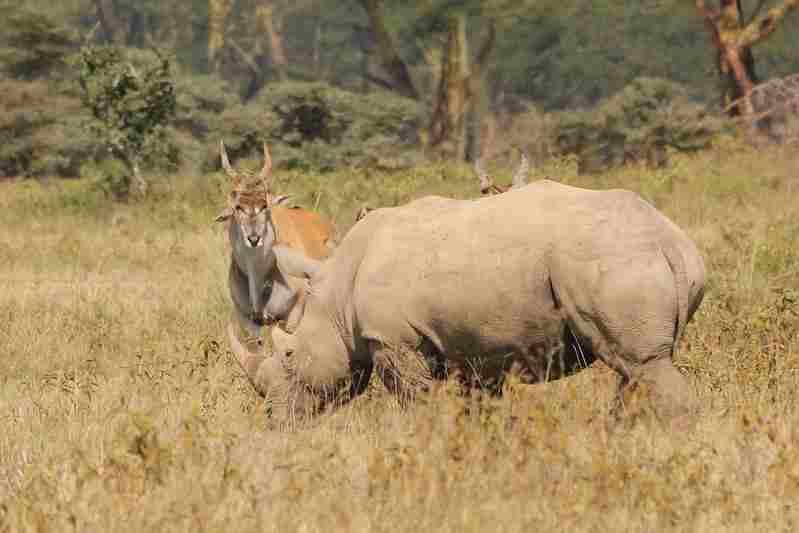
FAQs
1. Are Grass Decomposers?
Grass is not a decomposer. It does not function as a saprophytic organism, which means it does not obtain nutrients by breaking down organic waste or remains of dead organisms. Instead, grass is classified as a primary producer.
i). Possession of Chlorophyll Pigment for Photosynthesis
Grass possesses chlorophyll pigment, which enables it to undergo photosynthesis. This process allows grass to convert sunlight, water, and carbon dioxide into glucose and oxygen. As a result, grass is able to produce its own food and energy.
ii). Intake of Carbon Dioxide with Release of Oxygen
Through photosynthesis, grass takes in carbon dioxide from the atmosphere and releases oxygen as a byproduct. This not only benefits the grass itself but also contributes to the oxygen levels in the environment.
iii). Possession of Typical Plant Features like Leaves and Roots
Grass exhibits typical plant features such as leaves, stems, and roots. These structures enable grass to absorb water and nutrients from the soil, further supporting its growth and survival.
Based on these factors, grass is not a decomposer but rather a primary producer. It utilizes photosynthesis, possesses chlorophyll pigment, and exhibits typical plant features to produce its own food and contribute to the ecosystem.
2. What Kind of Organism is Grass in the Food Chain?
Grass is an essential organism in the food chain and plays a crucial role as a primary producer. Through the process of photosynthesis, grass is able to convert sunlight, water, and carbon dioxide into glucose and oxygen. This ability to produce its own food makes grass a primary producer.
As a primary producer, grass occupies the first trophic level in the food chain. It serves as a source of energy for other organisms in the ecosystem. Grazing animals, such as cows and horses, consume grass as their primary food source. These herbivores then become food for secondary consumers, such as carnivores or omnivores.
The presence of grass in the food chain is vital for maintaining the balance and stability of the ecosystem. It provides a foundation for the energy flow and nutrient cycling within the ecosystem. Without grass as a primary producer, the entire food chain would be disrupted, leading to negative impacts on the entire ecosystem.
Therefore, grass is an important organism in the food chain, functioning as a primary producer. Its ability to undergo photosynthesis and produce its own food makes it a fundamental component of the ecosystem.
3. Is Wheat Grass a Producer?
Wheat grass is indeed a producer. As a species of grass, it possesses the same characteristics and abilities as other grasses, making it a primary producer in the ecosystem. Just like regular grass, wheat grass has the ability to undergo photosynthesis, converting sunlight, water, and carbon dioxide into glucose and oxygen.
This process allows it to produce its own food and energy.
Being a producer, wheat grass plays a vital role in the food chain. It serves as a source of energy for other organisms, particularly herbivores.
Grazing animals, such as cows and horses, consume wheat grass as part of their diet. These herbivores then become food for secondary consumers, such as carnivores or omnivores.
Wheat grass, like other grasses, is an essential component of the ecosystem. Its ability to produce its own food through photosynthesis contributes to the energy flow and nutrient cycling within the ecosystem.
Without wheat grass and other producers, the food chain would be disrupted, leading to negative impacts on the entire ecosystem.
4. Is Grass a Tertiary Consumer?
Grass is not a tertiary consumer. As discussed earlier, grass is a primary producer, meaning it is an autotroph that produces its own food through photosynthesis. It possesses chlorophyll pigment, which enables it to convert sunlight, water, and carbon dioxide into glucose and oxygen. Grass also has typical plant features like leaves and roots, further supporting its role as a primary producer.
A tertiary consumer, on the other hand, is an organism that feeds on secondary consumers. Grass does not possess the characteristics of a consumer, such as teeth and a complex digestive system. It does not feed on other organisms for its energy and nutrients.
By rewriting the question as “Is Grass a Tertiary Consumer?” and adding a question mark, we can clarify that grass does not fall into the category of a tertiary consumer. It is important to understand the distinctions between different trophic levels in the food chain, and grass clearly belongs to the producer level.
Therefore, grass is not a tertiary consumer but rather a primary producer. It plays a crucial role in the ecosystem by providing energy and serving as a food source for herbivores.
5. Is Grass a Secondary Consumer?
Grass is not a secondary consumer. As mentioned earlier, grass is a primary producer, which means it is an autotroph that produces its own food through photosynthesis. It possesses chlorophyll pigment, allowing it to convert sunlight, water, and carbon dioxide into glucose and oxygen. Grass also exhibits typical plant features like leaves and roots, further supporting its role as a primary producer.
A secondary consumer, on the other hand, is an organism that feeds on primary consumers. Grass does not possess the characteristics of a consumer, such as teeth and a complex digestive system. It does not rely on other organisms for its energy and nutrients.
By rephrasing the question as “Is Grass a Secondary Consumer?” and adding a question mark, we can clarify that grass does not fall into the category of a secondary consumer. It is crucial to understand the distinctions between different trophic levels in the food chain, and grass clearly belongs to the producer level.
Therefore, grass is not a secondary consumer but rather a primary producer. It plays an important role in the ecosystem by providing energy and serving as a food source for herbivores.
Grass forms the foundation of the food chain, supporting the growth and survival of various organisms in the ecosystem.
6. Is Grass a Heterotroph?
No, grass is not a heterotroph. Heterotrophs are organisms that obtain their energy and nutrients by consuming other organisms. Grass, on the other hand, is a primary producer, which means it is an autotroph that produces its own food through photosynthesis. It possesses chlorophyll pigment, allowing it to convert sunlight, water, and carbon dioxide into glucose and oxygen.
By rephrasing the question as “Is Grass a Heterotroph?” and adding a question mark, we can clarify that grass does not fall into the category of a heterotroph. Grass does not feed on other organisms and does not rely on external sources for its energy and nutrients.
As discussed earlier, grass is a vital component of the food chain as a primary producer. It forms the foundation of the ecosystem, providing energy and serving as a food source for herbivores. Grass plays a crucial role in maintaining the balance of the ecosystem and supporting the growth and survival of various organisms.
7. Is Grass a Herbivore, Carnivore, or Omnivore?
No, grass is none of these. Grass is not a consumer in the traditional sense. Instead, it serves as a primary producer in the food chain.
As mentioned earlier, grass is an autotroph that produces its own food through photosynthesis. It possesses chlorophyll pigment, which enables it to convert sunlight, water, and carbon dioxide into glucose and oxygen.
Herbivores, on the other hand, are organisms that feed exclusively on plants. They rely on grass and other plant materials as their primary source of energy and nutrients. Grass, being a primary producer, is a vital food source for herbivores in various ecosystems.
consumer categories.
Grass is not capable of actively consuming other organisms, nor does it possess the characteristics typically associated with herbivores, carnivores, or omnivores, such as specialized teeth or a complex digestive system.
8. Is Grass a Decomposer?
No, grass is not a decomposer.
As mentioned earlier, grass is a primary producer in the food chain. It is an autotroph that produces its own food through photosynthesis. Grass possesses chlorophyll pigment, which enables it to convert sunlight, water, and carbon dioxide into glucose and oxygen. This process allows grass to create its own energy and nutrients, making it an essential part of the ecosystem.
Decomposers, on the other hand, play a different role in the food chain. They break down dead organic matter, such as fallen leaves or animal carcasses, into simpler substances. This process releases nutrients back into the environment, allowing them to be reused by other organisms. Decomposers, like bacteria and fungi, have specialized enzymes that enable them to break down complex organic compounds.
Grass, however, does not possess the necessary characteristics or enzymes to decompose organic matter. It relies on external decomposers to break down dead plant material and release nutrients into the soil.
Without decomposers, the nutrient cycle in ecosystems would be disrupted, and the availability of essential elements for other organisms would be limited.
9. Is Grass an Autotroph?
Yes, grass is an autotroph. Autotrophs are organisms that can produce their own food from inorganic materials and sunlight through the process of photosynthesis.
Grass possesses chlorophyll pigment, which enables it to capture sunlight and convert it into energy. This energy is used to combine carbon dioxide from the air with water from the soil, resulting in the production of glucose and the release of oxygen.
By being an autotroph, grass plays a crucial role in the ecosystem as a primary producer. It forms the foundation of the food chain by providing energy and nutrients to other organisms. Grazing animals, such as cows and sheep, feed on grass, obtaining the energy they need to survive. In turn, these herbivores become food for carnivores, creating a complex web of interactions within the ecosystem.
The ability of grass to produce its own food is essential for the sustainability of ecosystems. It ensures a continuous supply of energy and nutrients, supporting the growth and survival of various organisms. Without autotrophs like grass, the food chain would collapse, and the balance of the ecosystem would be disrupted.
Conclusion
* Grass is a primary producer because it possesses chlorophyll pigment for photosynthesis, takes in carbon dioxide and releases oxygen, and has typical plant features like leaves and roots.
* Grass is not a consumer because it does not feed on other organisms, lacks consumer characteristics like teeth and a complex digestive system, and is found at the base of the food chain.
* Grass is an autotroph, meaning it can produce its own food through photosynthesis, and plays a crucial role in the ecosystem as a primary producer, providing energy and nutrients to other organisms.
